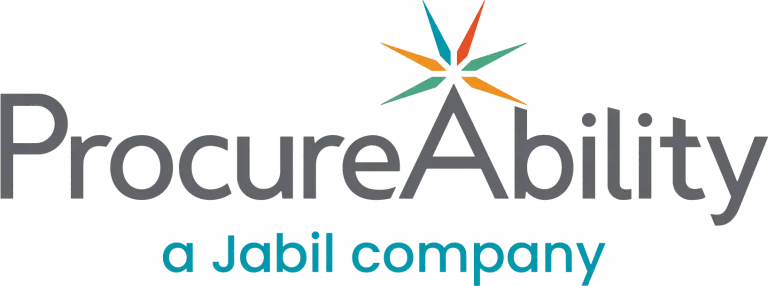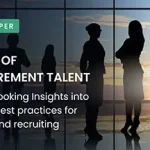Predicting the procurement workforce in 2030 is challenging due to economic, technological, social, and regulatory influences. In the first three installments of the Future of Procurement Talent series, we explored strategies for recruiting, developing, and retaining top procurement talent.
Attracting top procurement and supply chain talent
By 2030, recruitment will be increasingly technology-driven. Artificial intelligence (AI) and data analytics will match candidates to roles based on skills, career goals, and cultural fit.1 This will create personalized, efficient recruitment experiences that optimize talent acquisition while improving candidate engagement. AI will also analyze historical data and workforce demand patterns to help organizations allocate resources more effectively.
Key recruitment trends include:
- Personalized candidate experiences, from job recommendations to tailored onboarding materials.2
- AI-powered talent marketplaces that compare external candidates with internal employees.3
- Automation in resume screening, interview scheduling, and candidate ranking.
Leveraging Data and AI in HR
Data-driven HR is set to become the standard. Over 80% of talent leaders that analytics will guide workforce decisions in the next five years.4 Predictive analytics will forecast talent demand across markets and industries, helping organizations plan proactively. This approach ensures the right talent is aligned with business needs, performance metrics, and targeted training programs.
Employer Branding and Purpose-Driven Work
The future of employer branding will hinge on purpose, values, and tech-enabled experiences. Candidates will increasingly seek organizations that align with their personal values, emphasize meaningful work, and prioritize employee well-being. Immersive technologies, like virtual reality (VR) and augmented reality (AR), may allow prospective employees to experience company culture firsthand.
Remote Work and Global Teams
The rise of remote work is reshaping talent strategy. Over 32 million Americans work remotely, with 98% desiring at least partial flexibility.5 Remote and hybrid models expand talent pools globally, requiring leaders to rethink workforce planning, onboarding, and engagement strategies. Successful organizations will prioritize:
- Flexible work arrangements
- Integrated remote onboarding experiences
- Strong virtual collaboration and engagement practices
Diversity, Equity, and Inclusion (DEI)
DEI initiatives are central to creating inclusive procurement teams. Remote work enables global collaboration, incorporating diverse geographic perspectives and expanding market reach. AI can enhance diversity in performance management and candidate evaluation—but leaders must monitor for bias to ensure fairness. Procurement professionals play a pivotal role in balancing AI efficiency with human judgment in talent decisions.6
Integrating the Gig Economy
The gig economy offers flexible solutions for specialized procurement projects. Engaging freelance experts provides cost-effectiveness while allowing organizations to scale talent on-demand. This approach complements full-time staffing, particularly for short-term or highly technical initiatives.7
Employee Development and Continuous Learning
The procurement workforce of 2030 will need a blend of technical and soft skills. As AI, automation, and analytics reshape procurement, employees will require proficiency in:
- Data analysis and AI-driven decision-making8
- Supplier relationship management
- Negotiation and emotional intelligence
- Cross-functional collaboration
Comprehensive learning programs and upskilling initiatives will be critical to retain top talent.9 Studies show 71% of employees report increased job satisfaction through training, and 61% cite upskilling as a key motivator to stay with an employer.10, 11
Shifting CPO Priorities and Strategic Focus
As the Chief Procurement Officer (CPO) role evolves, procurement teams must adapt. Recent reports indicate CPO priorities include process improvement, technology transformation, and supply chain resilience. These priorities shape skill development needs, fostering roles like AI procurement analysts, digital procurement specialists, and technology integration managers.12
Sustainability, Ethical Sourcing, and Supplier Collaboration
Procurement professionals will play a strategic role in driving sustainability, ethical sourcing, and supplier collaboration. Organizations emphasizing environmental and social responsibility will attract top talent and build long-term competitive advantages.13
Data Privacy and Security
With digital procurement platforms increasingly prevalent, safeguarding data has become a strategic priority. Procurement leaders may oversee cybersecurity initiatives, with emerging roles like cybersecurity category leads bridging IT and procurement responsibilities. Training in data protection will be essential for future procurement teams.14
Preparing for 2030: Key Takeaways
The procurement workforce of 2030 will be defined by adaptability, continuous learning, and technological proficiency. Organizations that proactively embrace AI, automation, remote work, DEI initiatives, and sustainability will attract and retain top talent. Partnering with third-party service experts can help navigate the complexities of this evolving landscape, ensuring your organization thrives in the years ahead.
Author:
Sources:
1 Future of Procurement Talent: Attracting Top Procurement Talent
2 Procurement Metrics that Matter in 2022
3 Human Resources and Recruitment Trends for 2024
4 Predictions on How Recruiting Will be Different in 2025
5 Remote Work Statistics and Trends in 2024
6 AI Brings Opportunities and Risks to Workplace DEI Efforts
7 5 Bold Predictions Whitepaper
8 Procurement Talent of the Future: Developing your procurement team from the inside out
9 Procurement Talent of the Future: Retaining Top Procurement Talent
10 The American Upskilling Study: Empowering Workers for the Jobs of Tomorrow
11 2024 State of Procurement Report
12 The 2024 Annual ProcureCon CPO Report
13 Moving your Procurement Organization from Tactical to Strategic





